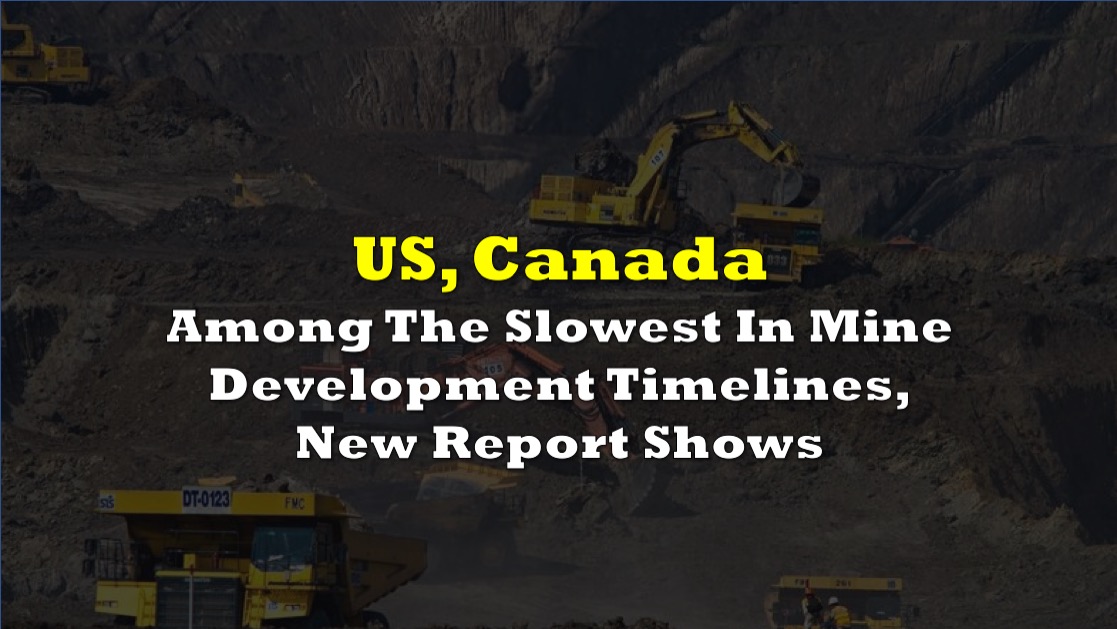A recent report by S&P Global reveals that the United States has the second-longest average lead times for developing new mines, trailing only Zambia. The study, titled Mine Development Times: The U.S. in Perspective, finds that it takes an average of 29 years for mines in the US and 27 years in Canada to go from discovery to production. These are significantly longer than in other major mining countries and poses a challenge for meeting the surging demand for critical minerals necessary for the energy transition.

The lengthy development timelines in the US contrast sharply with its substantial resource base. The country boasts more than 275 million metric tons of copper reserves and resources, comparable to the combined reserves of Canada and Australia. Additionally, the US holds over 43 million tons of lithium, more than double that of Australia, which currently dominates global lithium production.

“This new analysis underscores a fundamental challenge for the energy transition,” said Daniel Yergin, Vice Chairman of S&P Global. “Building the new infrastructure and adopting new technologies in the pursuit of Net-zero 2050 goals will greatly depend on reconciling surging demand with long lead times and other challenges presently encountered in scaling up the supply of critical materials.”
The report highlights that investment in mining exploration has been substantially lower in the US compared to other advanced economies. Over the past 15 years, exploration budgets in Australia have been 57% higher, and in Canada, 81% higher. This disparity in investment is partly attributed to the greater certainty that projects in Canada and Australia will ultimately reach production.

“Pre-production value of the 10 US mines still in development, though not yet operating, represents a value of more than USD 100 billion worth of copper, gold, lithium, and zinc,” said Mohsen Bonakdarpour, Executive Director of S&P Global Market Intelligence.
The report draws on the expertise of S&P Global’s Commodity Insights and Market Intelligence divisions, utilizing their proprietary Global Metals and Mining database. It compares the US with Canada and Australia, finding that while Canada’s average lead time is slightly better at 27 years, Australia’s stands at 20 years. Notably, Ghana, the Democratic Republic of Congo, and Laos have some of the shortest development times globally, averaging 10 to 15 years.
A significant factor contributing to the lengthy development times in the US is the high rate of litigation against mining projects. The report notes that litigation risks in the US are higher than in Canada and Australia combined, discouraging exploration investments. Additionally, overlapping federal and state regulations complicate the permitting process, particularly for projects on federal lands.
The report includes data on major US mining projects such as Rio Tinto and BHP’s Resolution Copper project in Arizona and Northern Dynasty’s Pebble copper and gold project in Alaska. Both have faced significant opposition from Indigenous and environmental groups, and neither has yet received the necessary permits.
Eleven mines each in Canada and Australia were included in the initial analysis.
While the report does not offer specific policy recommendations, it suggests that streamlining the permitting process and reducing litigation risks could help shorten development times. This, in turn, would encourage more investment in the mining sector, which is crucial for securing the minerals needed for the energy transition.
Information for this briefing was found via Reuters, Mining.com, and the sources mentioned. The author has no securities or affiliations related to this organization. Not a recommendation to buy or sell. Always do additional research and consult a professional before purchasing a security. The author holds no licenses.









